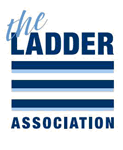No products
Prices are VAT included
Ladders & WAHR
Ladders and the Working at Height Regulations (WAHR)
 The latest Working At Height Regulations came into force during 2005.
The latest Working At Height Regulations came into force during 2005.
The Ladder Association, (formerly the British Ladder Manufacturers Association, BLMA), has produced a Working At Height Regulations document in consultation with the Health and Safety Executive, (HSE) and the Department of Trade and Industry, (DTI), and the British Standards Institution, (BSI), to assist in the understanding of how the new legislation will affect the use of ladders.
Essentially the message is clear and precise...
- Ladders are legal and are not banned in the workplace
- Ladders can be used for access, egress and to work from
- If it's right to use a ladder, use the right ladder
- Use the right ladder safely
The use of portable ladders in industry in UK is currently controlled under a number of legal items including:
- Health and Safety at Work etc Act 1974
- Construction (Health, Safety and Welfare) Regulations 1996 (CHSWR)
- Management of Health and Safety at Work Regulations 1999
- Manual Handling Regulations 1992
- Personal Protective Equipment (PPE) Regulations 1992*
- Provision and Use of Work Equipment Regulations (PUWER) 1998
- Workplace (Health, Safety and Welfare) Regulations 1992
Notes: other more industry-specific related regulations might apply * e.g. when FAS (Fall Arrest Systems) are used in conjunction with a ladder.
The primary objective of the WAHR legislation is to eliminate work at height where possible and where it is not possible to ensure that ALL work at height is performed safely and that equipment had been appropriately selected, whether it is from a mobile access tower, scaffold or a ladder.
Many of the requirements contained in the new legislation already featured in existing legislation specific to the construction industry and under the new legislation these will apply to all sectors of the economy. All work at height will be covered and not limited to any specific height or work equipment used.
As under existing legislation, duties are placed on employers, the self-employed and employees.
The WAHR require employers and the self-employed to put in place of arrangements for:
- Eliminating or minimising risks from work at height
- Organising and planning work at height
- Selecting suitable work for equipment to perform work at height
When selecting a suitable work equipment account must be taken of the principles of Risk Assessment as required by the Regulation 3 on the Management of Health and Safety at Work regulations 1999. The Risk Assessment and the action taken should be proportionate to the harm that could occur if no action was taken.
Where work at height cannot be eliminated/avoided, safe means of access/working should be considered. As far as the ladders in particular are concerned the following should be considered:
- What it is to be used for
- Type of ladder
- Short duration of the work
- Prevention of and consequences of falls
- Wear and tear of the equipment
- Other suitable access equipment
- Frequency of access
- Training and abilities of users
- Workplace, ground and site conditions
- Access and egress
- External factors such as weather, vandalism and electrical safety
Ladders are work equipment as defined by PUWER 98 and must be suitable for the task undertaken.
Ladders can be used as workplaces when it is not reasonably practicable to use other potentially safer means and the Risk Assessment shows that risks are low.
Ladders can be used for access when the insulation of a permanent staircase is not reasonably practicable.
Ladders should be used in accordance with manufacturer's instructions and:
- Leaning ladders should be placed at the correct angle
- Leaning ladders should be secured to prevent slippage
- Ladders should be placed on a firm level surfaces with rungs horizontal
- Users should face the ladder at all times whilst climbing or dismounting
- Stepladders should not be used sideways-on where sideways loads are supplied
- Only one person should climb or work from a ladder or a stepladder
- Do not overreach
- Ladders should be stored correctly
- Ladders should be checked before setting up and inspected regularly
Note: WAHR spells out the need to check and maintain ladders. WAHR are not requiring anything new, but they are clearly stating the general requirements of PUWER to maintain and inspect work equipment (Regulations 5 and 6 (2)).
Many of these points do not change from current legislation however the Ladder Association have produced Risk Assessment Guidelines forms for stepladders and leaning ladders to aid those responsible for ladder use, and these items are available as a free download from the Ladder Association website.

